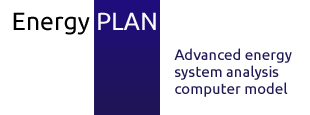Authors: Henrik Lund, Brian Vad Mathiesen, Jakob Zinck Thellufsen, Peter Sorknæs, Iva Ridjan Skov
Link to Report (Danish)
Summary (English)
Link to EnergyPLAN models
For the past year, we have been living in a time of COVID-19, and the pandemic continues to affect all aspects of our daily lives. As a society, we have proven that we can handle major challenges when the world demands it, and in IDA believe we must apply that same resourcefulness to the solution of other challenges. First on the list is the climate. The political focus in the last year or two has been on the first target of the Danish Climate Act. The goal of a 70% reduction in greenhouse gas emissions by 2030. There is still some way to go before Denmark reach that goal. But 2030 is only 9 years away, so we need at the same time to be working on the second Climate Act goal of a climate-neutral Denmark. The Danish Society of Engineers, IDA, in collaboration with the Sustainable Energy Planning Research Group in the Department of Planning at Aalborg University, has therefore worked out a scenario for climate
neutrality in Denmark by 2045.
IDA’s Climate Response does not cover all sectors. We have restricted ourselves to energy and transport. This means that we have defined a context in which the other sectors will also contribute to meeting the overall objective. In addition to energy and transport, those sectors include industrial processes, agricultural land use and others such as waste disposal and sewage treatment.
Danish emissions were 75.7 Mt in 1990; a 70% reduction thus means bringing this down to 22.7 Mt in 2030. IDA assumes that there will also be reductions in the other sectors up to 2030. Concretely, it is assumed that the other sectors will reduce emissions from an (expected) 17 Mt in 2020 to 11.7 Mt in 2030. Energy and transport emissions will be reduced from 30 Mt in 2020 to approx. 11 Mt in 2030 and zero in 2045.
IDA’s Climate Response is our vision of how Denmark can achieve its goal of a 70% reduction in climate gases by 2030 and become climate neutral by 2045 in the field of energy and transport. IDA’s Climate Response has been published in two rounds: first in May 2020, and in June 2021 with concrete modelling and analysis of the year 2045. All together the IDA’s Climate Response has the following conclusions.
This is the route to a 70% reduction by 2030 and climate neutrality by 2045 in the most cost-effective way in the transport and energy sector:
- We must continue to focus on energy efficiency improvements in industry and buildings. Keeping energy consumption down will make the conversion to sustainable energy less resource intensive. The goal for heat savings should be a 12% reduction by 2030 and a 30% reduction by 2045 as against the present.
- We must plan on the basis that there will be a pronounced rise in electricity consumption because energy use will be switched from fossil fuels to electricity and because new demands will arise from, for example, hydrogen and electrofuel production.
- Much more wind power will be required. Wind power must be expanded from approx. 6 GW in 2020 to at least 11 GW in 2030 and 19 GW in 2045.
- Solar photovoltaic (PV) must be expanded, using big industrial roofs, from 1 GW to 5 GW in 2030 and 10 GW in 2045.
- Power-2-X, and the direct need for hydrogen in transport, will mean making room for big electrolysis plants: 1200 MW of electrolysis by 2030 and 4800 MW by 2045.
- Surplus heat from industry and data centres must be used in the district heating system. The same goes for surplus heat from electrolysis and Power-2-X production, e.g., electrofuels. District heating must be expanded with geothermal energy, large heat pumps and solar heating.
- Oil and gas boilers must be phased out before 2030 and replaced with district heating and individual heat pumps. District heating must be expanded to supply 63% of heating needs, primarily in natural gas areas.
- Carbon capture from various point sources such as waste incineration will come to play an important part even before 2030. Priority must be given to carbon capture for use in electrofuels (CCU), which is the circular solution. Only in the longer term should priority be given to storage (CCS), which will compensate for emissions that cannot be eliminated in other ways.
- Denmark must reduce its dependence on the burning of biomass. But biomass must not be phased out; it must be developed. IDA’s Climate Response 2045 proposes the use of a combination of conversion technologies such as biogas, thermal gasification, pyrolysis and HTL.
- Buses, cars, vans, and trains must become electric. There is only room for 1.5 million petrol and diesel cars in 2030, and none in 2045. On the other hand, there will probably be more than 3 million electric cars on the roads in 2045.
- 5% of lorries should be battery powered or plug-in hybrids, and 5% should be running
directly on electricity by 2030. This must rise to 35% of lorries on battery power and
400 km of e-roads in Denmark by 2045.



